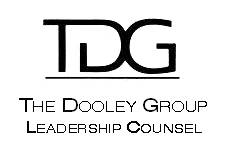GUEST PERSPECTIVE: Of Bits, Bytes, Business Processes – and Documents
 When most senior information technology (IT) executives describe integration, they are generally speaking about their IT infrastructures – networks, databases, routers, servers, clients, and printers – and the ways they intersect and accelerate company business processes.
When most senior information technology (IT) executives describe integration, they are generally speaking about their IT infrastructures – networks, databases, routers, servers, clients, and printers – and the ways they intersect and accelerate company business processes.
Increasingly the integration discussion also needs to address documents. The reason: Today’s documents are increasingly accessed and used in their electronic versions, complementing-and even surpassing-information technology systems in the role of integrating the organization’s staff and business processes. Senior information technology executives who recognize and act upon this trend will better align IT and corporate goals and deliver to their organizations the most comprehensive and powerful tools available to ensure the enterprise’s success.
In one form or another, documents have always been the focus of people’s work. Nothing gets done without an accompanying document – or, more often, a collection of documents – whether in digital format, on paper, or as graphics.
As long as documents were largely in non-digital formats, IT professionals did not have to pay much attention to them. As they became digital, though, documents become citizens of the IT infrastructure, and they place new demands on IT systems. Clients seek to extend the advantages of digital documents over other forms by tapping into the capacities of networks for rapid communications, enterprise-wide storage and retrieval, efficient document reuse, and unprecedented flexibility. Business users seek to include and transmit information that cannot easily be rendered on paper, such as sound and full-motion video. And they seek to take advantage of information technology to make the business processes that documents drive more efficient and effective.
Documents are becoming even more integral to IT infrastructures today as technologies reach the market that more easily permit paper documents to become part of the network flow. While printing – that is, producing paper documents from electronic versions – has long been part of IT’s world, moving from electronic to paper versions is only now emerging as an enterprise-wide capability. Current network scanners can transform paper documents to machine-readable formats in speeds as fast as 65 pages per minute, permitting them to be routed anywhere on the network at the push of a button. Glyph technology – elegant encodings of digital data on paper that are less obtrusive than barcodes and capable of encoding unlimited amounts of data – permit printed documents to provide instructions on document delivery, storage, and other actions to be taken. And development in these areas is ongoing; more breakthroughs are on the way.
One result of all this is that knowledge workers increasingly think of their documents – in all of their various forms – as part of an integrated whole. Life is certainly easier and work more satisfying when the form(s) a document takes – be it a day planner, financial report, or business correspondence – fits a work process intuitively, without constraining the worker to archaic or inefficient methods.
Savvy IT managers can leverage these new document capabilities the same way they leverage the IT infrastructure itself to integrate the organization and optimize business processes. Documents will increasingly serve much the same function as IT – as the “pulleys” management adjusts to ensure business functions are appropriately aligned with business needs.
The benefits of suitable integrated business functions are numerous. Automated processes run more efficiently, staff satisfaction is optimized, and senior management has access to the tools it need for help in determining future business directions. This is the world in which senior IT executives have their most significant and satisfying impacts. But just knowing bits, bytes, and business processes won’t get them there.
Today they need to know documents too.



